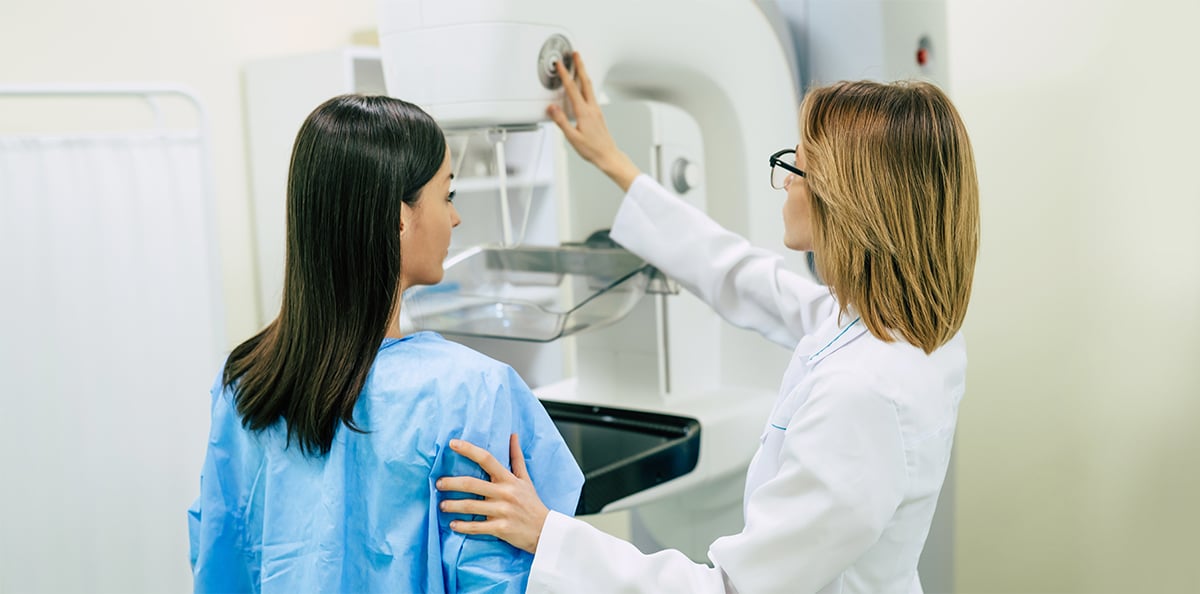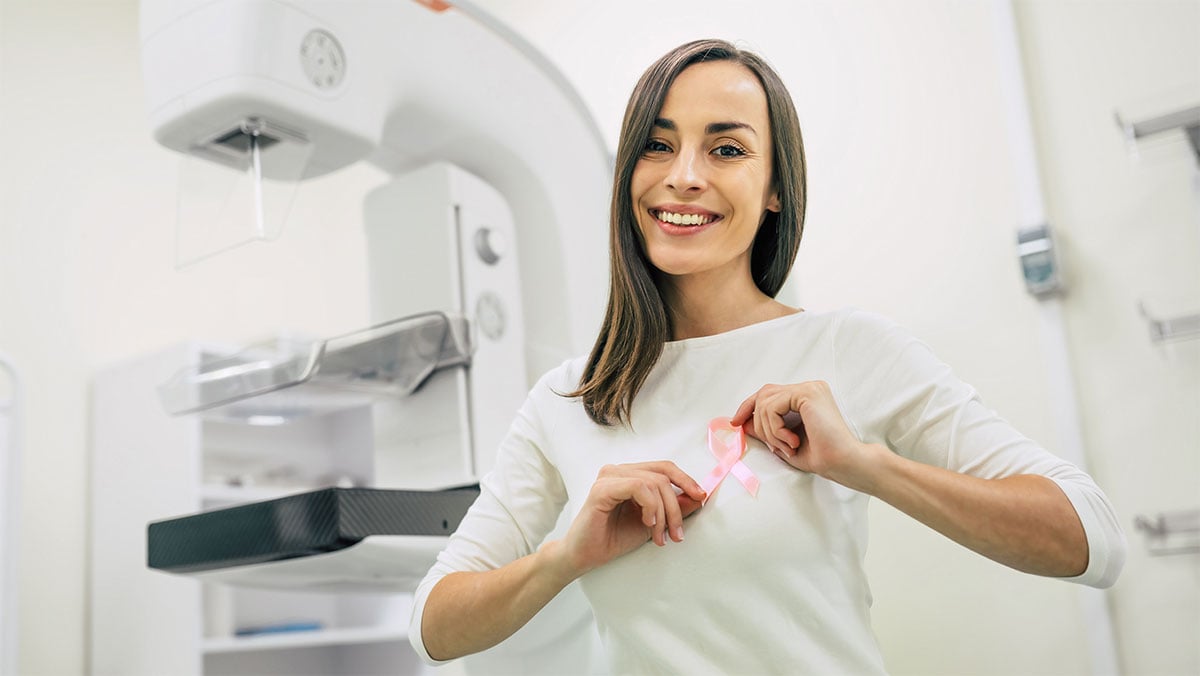Medical breast exams are a simple but crucial physical exam done by a healthcare professional to aid in the early detection of breast cancer or other complications. This is a common exam often done as part of a regular annual checkup, although many women make appointments for this exam specifically.
While early cancer detection is a major priority in breast screening procedures, it's not the only priority. These exams promote overall breast health and address benign breast lumps, nipple discharge, and general breast pain.

A medical breast exam will involve your provider examining the shape, size, and texture of your breasts while using the tips of their fingers to check for anything that feels abnormal. Along with checking your breasts, they will also check the breast tissue that extends into your armpits. Our providers have been trained to feel for problems and can make effective and informed conclusions about your breast health. A medical breast exam, or clinical breast exam, should be done by a healthcare professional, such as a gynecologist.
Being familiar with how your breasts normally look and feel is an important part of breast health. If you notice any changes, such as a new lump, nipple discharge, or skin differences, you should talk to your doctor right away.
In recent years, medical guidelines have shifted away from recommending structured monthly self-exams. Research shows that self-exams don’t always detect abnormalities and can sometimes lead to unnecessary worry. Instead, the focus is now on breast awareness and knowing what’s normal for you so you can recognize changes early.
Because every woman’s risk is different, your provider will work with you to:
Want to learn more? Visit our blog on updated breast self-exam guidelines and practices.
Breast cancer doesn’t always cause noticeable symptoms in its earliest stages, which is why regular screenings and breast awareness are so important. However, there are certain changes you should watch for and bring to your provider’s attention right away:
Not every lump or change means cancer; many are caused by benign (non-cancerous) conditions, but it’s always best to have them evaluated promptly. Early evaluation offers peace of mind and, if needed, quicker treatment options.
Breast cancer remains the most common non-skin cancer among women in the United States, accounting for about 30% of all new female cancers each year. In Wisconsin, the incidence rate of invasive breast cancer from 2017–2021 was about 137 per 100,000 women, slightly above the national average.
Early detection makes a powerful difference. According to the American Cancer Society, the five-year relative survival rate for women with localized breast cancer—detected early and confined to the breast—is 99%. That means most women diagnosed at this stage survive and thrive after treatment. An exam that takes just a few minutes can truly save lives.
But cancer detection isn’t the only reason to stay on top of breast exams. These visits can also help identify and treat other issues, such as:
Whether it’s part of your annual checkup or a visit prompted by changes you’ve noticed, a medical breast exam is an important step in protecting your health. Below are examples of when you should schedule a breast exam.

Your annual exam is a key opportunity to protect your health. In addition to a pelvic exam and overall wellness assessment, your provider can perform a breast exam to screen for concerns both big and small.
Learn more about simple steps you can take towards a healthy future by reviewing our women’s preventive health page.
You should schedule a medical breast exam right away if you experience any of the following changes in nipple or breast tissue:
Your health is too important to ignore. If something feels off, trust your instincts and reach out to your OB-GYN with any questions or concerns.
Mastitis is an inflammation of breast tissue that can sometimes involve an infection. It occurs when milk ducts become blocked or bacteria enter the breast, often through a cracked or sore nipple. While mastitis is most common in women who are breastfeeding, it can also affect women who are not breastfeeding.
Common symptoms of mastitis include:
When to call your doctor: If you experience breast pain with redness, swelling, or fever, especially while breastfeeding, it’s important to schedule a medical breast exam. Early treatment can ease symptoms, prevent complications, and help you continue breastfeeding comfortably if you choose.
Check out this blog post for more common reasons you may be experiencing breast pain.
Medical breast exams and mammograms are not the same.
Both play important roles in breast health. A clinical breast exam can identify concerns that may lead to further testing, while mammograms provide detailed imaging for early detection. Depending on your age, risk level, and health history, your provider may recommend both as part of your screening plan.
Breast cancer forms in the cells of the breast, and according to the National Cancer Institute, 12.9% of women in the U.S. will develop breast cancer at some point in their lifetime. That may not sound like a huge percentage, but that’s still a 1 in 8 chance.
If, during your medical breast exam, your Moreland OB-GYN provider finds symptoms that may indicate an issue or if you qualify for a mammogram or breast ultrasound, they can order these tests to ensure you get the care you need for optimal breast health.
Types of mammograms include:
For a woman who is not experiencing any breast abnormalities or has a personal history of breast cancer or a family history of breast cancer, the general guidelines for when to get a breast exam or mammogram are as follows:
Women who are at higher risk should be tested more often and should discuss with their doctor the specific clinical breast exam guidelines to follow.

The dedicated healthcare providers at Moreland OB-GYN are here to listen and to provide expert care to women of all ages. We understand the difficulties of daily health and want to be sure you are well-educated about your own breast health and wellness needs.
While no set of guidelines is perfect, maintaining an open line of communication with your OB-GYN allows you to feel confident knowing that your unique concerns and medical needs are being addressed.
If you have questions or would like to schedule a breast exam, request an appointment with Moreland OB-GYN today.
It depends on your age, risk factors, and medical history. Many women have a breast exam as part of their annual OB-GYN visit, but your provider may recommend a different schedule based on your personal needs.
Most guidelines now recommend starting screening mammograms at age 40, but this can vary based on your family history, genetics, or other risk factors. Your provider will help create the right plan for you.
No. A breast exam is a physical evaluation performed by a healthcare professional who uses their hands to feel for lumps, thickened areas, or changes in breast tissue. A mammogram is an X-ray image of the breast that can detect smaller changes or abnormalities that may not be felt during an exam. They complement one another in screening for breast health issues.
Yes. Dense breast tissue can make mammograms more complicated to read and may slightly increase your risk of breast cancer. If you have dense breasts, your provider may recommend additional screening, such as an ultrasound or MRI.
No. Many breast lumps are benign (non-cancerous) conditions, such as cysts or fibroadenomas. However, it’s important to have any new lump evaluated to be sure.
Most women find it mildly uncomfortable but not painful. The exam only takes a few minutes and can provide peace of mind.
Yes. Breast changes are common during pregnancy and breastfeeding, but it’s important to have a provider evaluate any lumps, pain, or nipple changes to rule out infection or other concerns.
Phone: 262-544-4411
Fax: 262-650-3856
Monday-Thursday:
7:30 am – 6:00 pm
Friday:
7:30 am – 4:00 pm



